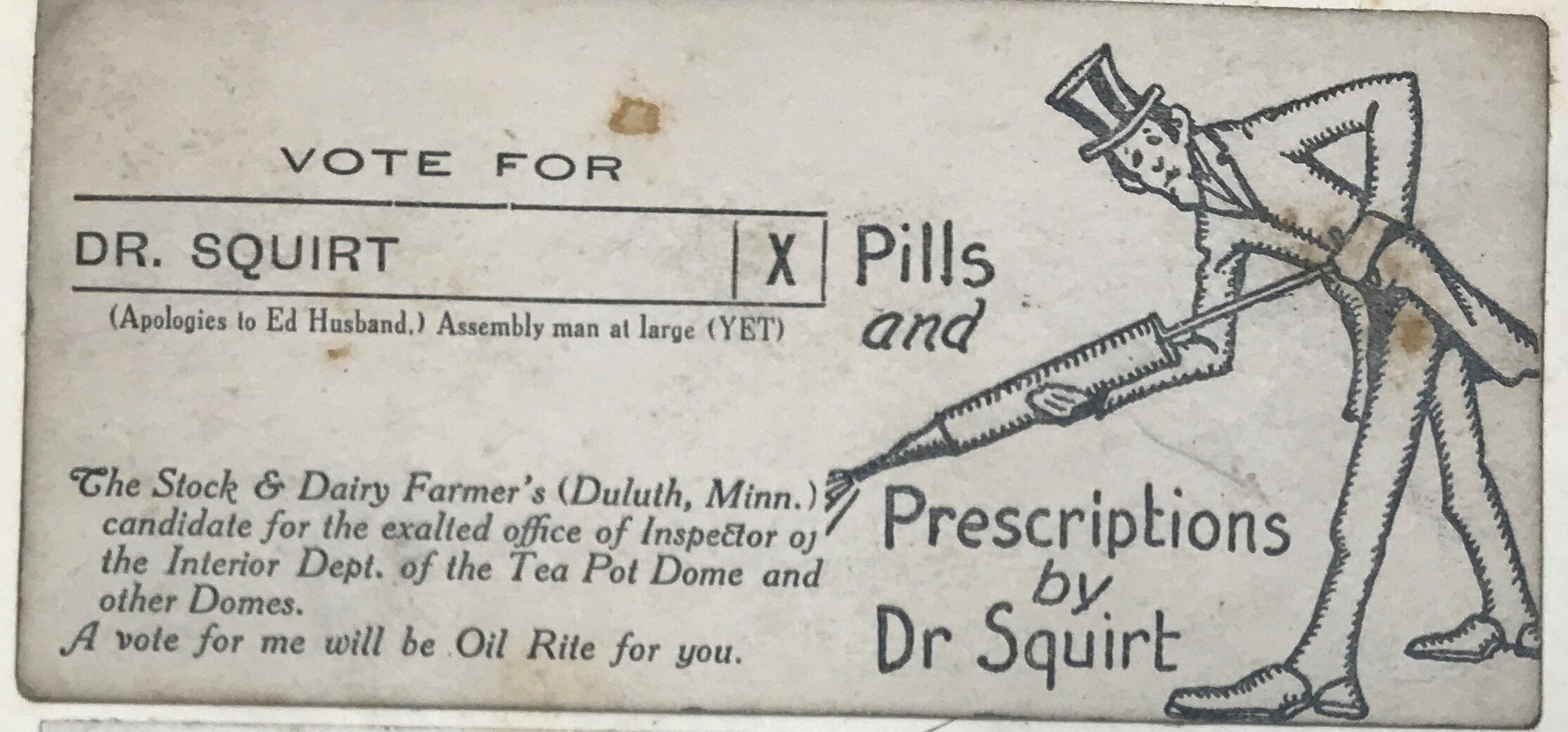After several owners, a 5 and 1/2 year restoration, a cross country trip, and a visit to Frederic, Polk County’s first automobile, a 1902 Oldsmobile, has moved to Europe. The late Gary Hoosbeen, founder of the Curved Dash Olds Club, and his wife Nancy, visited Frederic when he owned the Olds in 2012, stopping by the 1901 SOO Line Depot.
The article below by Hoonsbeen, describes the interesting history of this car, from being possibly Polk County’s first car, purchased new in 1902 for $650.00 to its March 2016 sale by Bonhams Auctions, to a European collector for $51,250.00. Thanks to Mark Hoonsbeen, Minneapolis, MN for information offered.
William Johnson, Frederic Area Historical Society
1902 Curved Dash Oldsmobile
Gary and Nancy Hoosbeen driving the 1902 Olds in Frederic, by the 1901 SOO Line Depot
1902 CURVED DASH OLDSMOBILE, The first car in Polk County.
It was in the summer of 1902 that Balsam Lake’s town doctor, James D. Nickelson, purchased a new Curved Dash Oldsmobile from the A. F. Chase agency in Minneapolis for $650.00. It was likely the first car ever brought to Balsam Lake and maybe even to Polk County. This is Dr. Nickelson’s original car. It was restored in 1980.
A former Milltown resident, Clarence Nelson, recalls in a December 30, 1978 interview, that one day in grade school, about 1904, they heard a strange noise outside on the road. The teacher, Martha Nelson, from Star Prairie, took the kids outside to watch Dr. Nickelson drive by in this little 1902 Oldsmobile. He remembers the teacher commenting they may never have another chance to see an automobile!
Dr. Nickelson had two daughters, Dorothy and Helen. Dorothy married Walter Anderson and Helen married Mr. Parks from Centuria. The Parks family were funeral directors. Helen’s husband was an auctioneer and hardware dealer. The doctor later became Milltown’s postmaster and lived in a converted Shell station in that town.
Clarence recalled that Dr. Nickelson had the Oldsmobile when he moved from Balsam Lake to Milltown in about 1906 or 1907. About 1908 the Oldsmobile was sold to the Milltown depot agent, Olaf Martin Lund, uncle to the man who years later founded the famous Lund Boat Works. Olaf left Milltown under some controversy that same year, driving the Oldsmobile back to his home town of Twin Valley Minnesota. In a 1985 letter, Olaf’s brother, 92-year-old Oscar J. Lund, recalls the trip across Minnesota, “The drive from Milltown must have been at least 500 miles and then mostly on dirt roads. I have gathered that my brother had driven to Wanamingo and then drove to visit my Dad’s brother, Rollof Lund, northeast of Wanamingo. I recall my brother mentioned that he had driven through farm fences and what-not to get there. Then I surmise that in doing so he had to drive over the covered bridge on the Zumbro River which has become a historical site”.
Olaf Lund continued to drive the 1902 Oldsmobile until about 1912 when it was replaced with a newer vehicle. It sat in the family barn until about 1918 when it was sold to a junk dealer as part of the scrap-metal drive for WW1. His brother Oscar was not happy about this so retrieved it from the junk yard for $2.00 and put it back in the barn where it sat until 1965.
The Lund’s sold their farm and auctioned off the equipment in 1965 and the little Oldsmobile was purchased by then state Senator Norm Larson, of Ada, Minnesota, for a sum of $125. Still in deplorable conditions from old age, the Oldsmobile again changed hands and moved to Oslo, Minnesota, selling this time for $2100.
In 1977 Gary Hoonsbeen, Minneapolis, purchased the car and after 5-1/2 years of work, restored it to near original condition. In 1985, Hoonsbeen drove this Oldsmobile from San Francisco to New York, a distance of 3844 miles, over a 38-day period. The Olds averaged 12 MPH traveling about 100 miles each day, including several hundred miles on the Interstate system in the Western United States. The car was appropriately named “OSCAR” for this trip, and it has the record of being the oldest model automobile ever cross country.
The car has only 1 cylinder, 4 inches in diameter, developing 4 and 1/2 horse power. Power is transferred to the rear axle with a block chain. It has two speeds and reverse using a planetary transmission, implemented many years before Ford used it on his automobiles. The top speed is about 25 miles per hour, maybe 30 with a good tail wind. It burns regular gasoline and consumes about 1 cup of oil every 50 miles. The tires have inner tubes with a size of 28 x 3 inches. Originally, it had wooden spoked wheels but they were in very poor condition and were replaced with wire wheels, which were an option in 1902. It is steered with a “tiller,” one of the last automobiles to use this type of equipment. About 20,000 Curved Dash Oldsmobiles were built between 1901 and 1907 of which nearly 1000 still survive in collector’s hands today. It sold originally for $650. On good roads it will carry four adults but it takes several minutes to get up to “full” speed. Two or three may be required to walk going up hills.
Clarence Nelson and Oscar Lund both lived into their 90’s-long enough to have rides in the restored 1902 Oldsmobile, making the restoration work all worthwhile.
By: Gary Hoonsbeen, Minneapolis, MN - June 10, 2004















